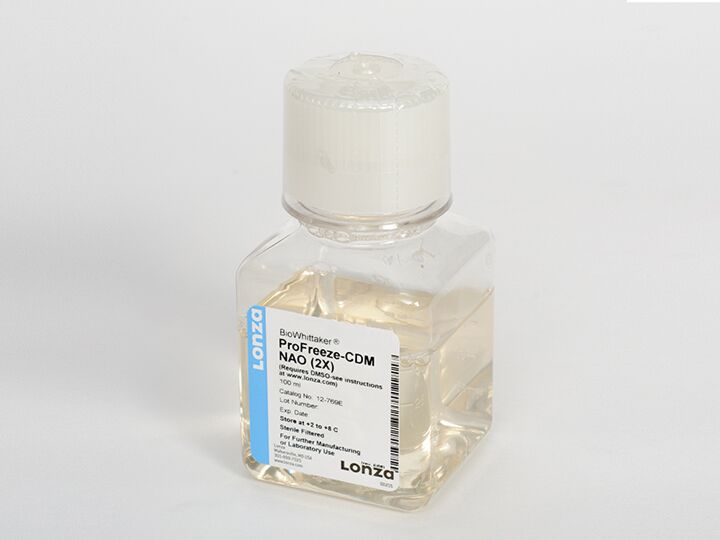The process of freezing often causes irreversible damage to cells through crystal formation. Cryoprotecting agents (CPAs) lower the melting temperature by forming chemical bonds with water and increasing the total concentration of solutes in the system. This will reduce the amount of crystals and protect the cells. Most CPAs enter the cells. This reduces the likelihood of cell dehydration. Examples include glycerol, DMSO, ethanediol, and propanediol.
 Changes in the regulatory demands the market for cell and gene therapy have resulted in a shift of cryopreservation techniques. Traditional methods often use serum and DMSO. The new freezing media are produced under cGMP conditions and are NAO and serum-free. Lonza offers a chemically defined cryoprotectant with such properties: TheraPEAKTM ProFreezeTM
Changes in the regulatory demands the market for cell and gene therapy have resulted in a shift of cryopreservation techniques. Traditional methods often use serum and DMSO. The new freezing media are produced under cGMP conditions and are NAO and serum-free. Lonza offers a chemically defined cryoprotectant with such properties: TheraPEAKTM ProFreezeTM
Another approach is new cooling techniques. Previous vitrification methods required the use of extremely high concentrations of CPAs, which often led to problems such as cell toxicity. A team of Japanese researchers at Shinshu University developed a way to freeze cells without using CPAs. This process of ultra-fast cooling freezes cells within seconds.
The most widespread is still the tried and tested method of CPAs such as DMSO. It is necessary to freeze the cultures with the highest possible number of cells.
Freezing Tips:
- Freeze only the highest quality cells.
- The cells should be cooled to 4 ° C before adding the CPA and frozen immediately afterwards. Freezing too quickly leads to ice crystal formation and freezing too slowly can lead to dehydration and shrinkage of the cells. The cooling rate must be optimized for the cell type.
- The cells must be stored below -130 ° C.
- Thaw the cells quickly and dilute the DMSO near the melting point while the cell metabolism is still suppressed.

 Deutsch
Deutsch




